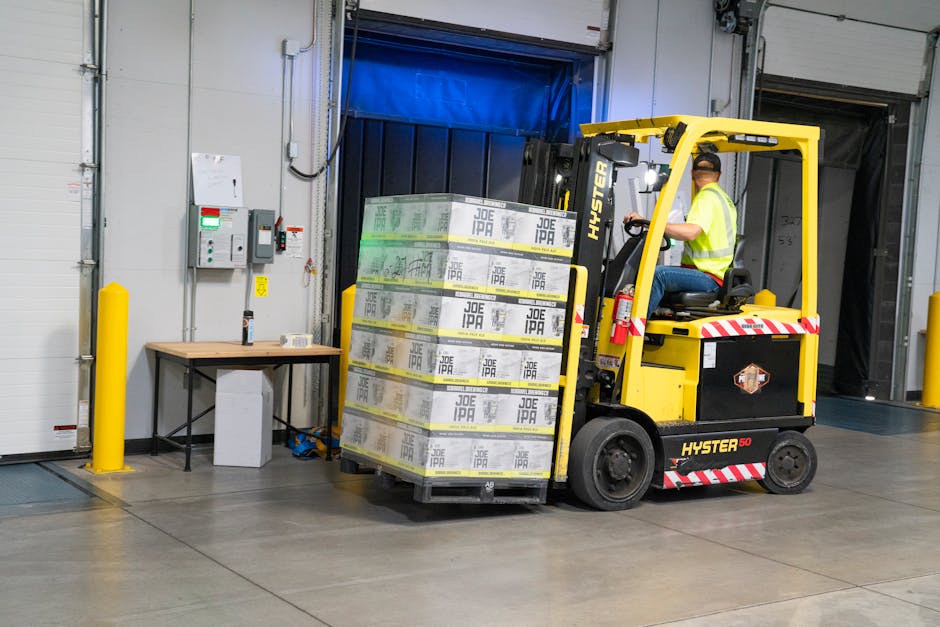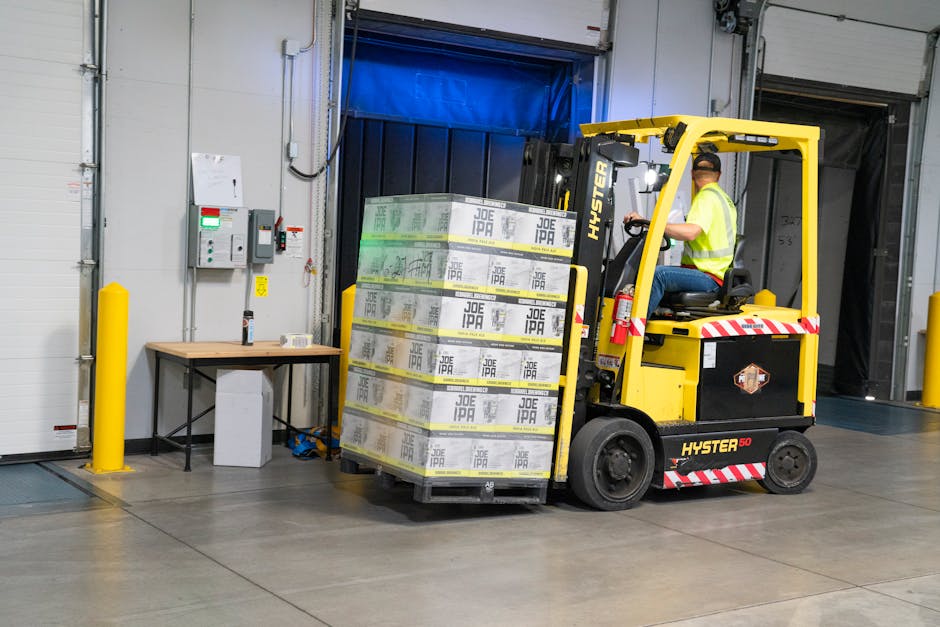Case study: deploying 500
Large-scale workforce deployment presents unique logistical challenges. This case study examines a major industrial project. Specifically, it details the mobilization of 500 forklift operators to Bahrain. The project required meticulous planning across multiple domains. These included immigration, housing, training, and compliance. The primary goal was ensuring zero operational downtime. This initiative, a case study: deploying 500 forklift operator to Bahrain, highlights critical success factors. However, it also reveals common pitfalls to avoid. Additionally, the scale demanded innovative resource management strategies. Furthermore, cultural and regulatory adaptation was paramount for seamless integration.
Such deployments are increasingly common in the Gulf region. Rapid infrastructure development creates high demand for skilled labor. Therefore, understanding this process is vital for global HR and logistics teams. This guide provides a comprehensive roadmap. It covers everything from pre-deployment checks to long-term retention. We will analyze each phase of the operation. This ensures you can replicate this success for your own projects.
Understanding Case study: deploying 500
This deployment was for a new logistics hub. The facility supports Bahrain’s growing manufacturing sector. Therefore, a skilled and immediate workforce was essential. The project timeline was aggressive. Consequently, traditional recruitment methods were insufficient. The solution involved a multi-national sourcing strategy. Operators were recruited from several countries. This approach diversified the talent pool. It also mitigated risks associated with single-source recruitment.
Key stakeholders included the Bahraini government, the client company, and our firm. Each party had specific responsibilities and expectations. Clear communication channels were established from day one. This prevented misunderstandings and delays. Moreover, a dedicated project management office was set up. This team coordinated all aspects of the large-scale manpower deployment.
Case study: deploying 500 Benefits
Executing this project successfully yielded immense advantages. The client activated their distribution center on schedule. This prevented significant financial losses. Furthermore, having a fully trained team from day one boosted productivity. The operators were already familiar with the site’s specific procedures. Therefore, safety incidents were minimized.
For the host nation, the project provided an economic boost. It also facilitated knowledge transfer to local staff. The structured approach to this bulk staff mobilization ensured compliance with all local laws. This included adherence to the International Labour Organization guidelines. Consequently, the project enhanced the company’s reputation as a responsible employer. This is crucial for winning future contracts in the region.
How Case study: deploying 500 Works
The process began with a thorough needs analysis. We identified the exact skill sets and certifications required. Next, our global recruitment team activated its networks. Sourcing was aligned with U.S. Department of Commerce trade information on labor markets. Rigorous vetting ensured only qualified candidates proceeded. This included practical skills tests and language assessments.
Simultaneously, our legal team managed the visa and work permit process. They worked closely with Bahraini authorities to streamline approvals. Meanwhile, the logistics team secured housing and transportation. A phased arrival schedule was implemented to manage the influx. This prevented bottlenecks at the airport and accommodation sites. Each operator received a comprehensive orientation upon arrival.
Best Case study: deploying 500 Practices
Several best practices emerged from this endeavor. First, early and continuous engagement with government bodies is critical. This ensures all regulatory requirements are met. Second, implementing a robust pre-departure training program is essential. This should cover local culture, laws, and workplace safety. Third, establishing a clear chain of command prevents confusion.
Another key practice is partnering with reliable local vendors. This applies to housing, catering, and transport. Additionally, using a centralized data management system is non-negotiable. It tracks every individual’s status, from visa to bank account setup. For more insights, explore our professional resources. These resources provide detailed checklists and templates.
Case study: deploying 500 Implementation
The implementation phase was broken into distinct stages. Stage one focused on recruitment and documentation. Stage two handled travel and immigration. The final stage covered on-ground integration and operations. Each stage had a dedicated manager and clear KPIs. Regular audits ensured compliance with World Health Organization workplace standards for health and safety.
Technology played a pivotal role. A custom portal allowed operators to upload documents and track their application status. This reduced administrative overhead significantly. Furthermore, a 24/7 support hotline was established in multiple languages. This addressed any issues the operators faced upon arrival. Such support systems are vital for morale and retention.
Advanced Case study: deploying 500 Strategies
For complex projects, advanced strategies provide a competitive edge. One strategy is data-driven decision-making. We analyzed World Bank economic reports to forecast regional stability. Another strategy involves creating a mixed-skills team. This includes team leaders and trainers within the deployed group. This fosters a self-sufficient community.
Additionally, implementing a train-the-trainer program ensures sustainability. Local staff can eventually take over training responsibilities. Moreover, developing contingency plans for various scenarios is crucial. These scenarios include political changes, health crises, or sudden contract alterations. Proactive risk management distinguishes successful deployments.
Case study: deploying 500 Success Tips
Communication is the cornerstone of success. Maintain transparent dialogue with all stakeholders. This includes the deployed employees themselves. Secondly, never underestimate the importance of cultural preparation. Understanding local customs, as outlined in resources like the UAE government employment regulations for the Gulf region, prevents friction.
Another tip is to invest in welfare. Happy and comfortable workers are more productive. Regularly check on accommodation and food quality. Finally, conduct post-deployment reviews. Gather feedback from the operators and the client. This continuous improvement loop refines your process for the next project. For personalized advice, consider an expert consultation.
Future of Case study: deploying 500
The future of international workforce deployment is evolving rapidly. Automation and AI will streamline recruitment and visa processing. However, the human element will remain irreplaceable. We anticipate a greater emphasis on upskilling. Deployed staff will need to handle more technologically advanced machinery.
Furthermore, sustainability and ethical recruitment will become standard requirements. Companies must demonstrate fair treatment and environmental responsibility. The model established in this case study: deploying 500 provides a strong foundation. It can be adapted for deploying other skilled trades globally. The principles of planning, partnership, and people-centric management are universal.
Frequently Asked Questions
What was the biggest challenge in deploying 500 forklift operators?
Coordinating the simultaneous visa processing for 500 individuals was the most complex hurdle. It required flawless documentation and constant liaison with Bahraini immigration authorities to avoid delays.
How long did the entire deployment process take?
From initial recruitment to full operational readiness, the process took approximately 14 weeks. This timeline included sourcing, vetting, visa procurement, travel, and on-site orientation.
What specific certifications were required for the operators?
All operators needed a valid forklift license and a minimum of three years of experience. Additional certifications in warehouse safety and hazardous materials handling were preferred for this large-scale manpower deployment.
How was cultural integration managed for the workforce?
We provided comprehensive pre-departure cultural sensitivity training. Furthermore, we hired local coordinators to facilitate integration and address any language or social barriers upon arrival in Bahrain.
What measures were taken to ensure employee retention?
We ensured competitive compensation, comfortable accommodation, and a clear grievance redressal system. Regular engagement activities and career growth opportunities were also key to retaining the deployed staff.
Can this deployment model be applied to other countries?
Absolutely. The core framework of this case study is adaptable. However, specific strategies for visa, housing, and compliance must be tailored to the laws and culture of the target country.
Conclusion
This detailed case study: deploying 500 provides a proven blueprint for success. It demonstrates that with rigorous planning and expert execution, even the most daunting logistical challenges can be overcome. The key takeaways are the importance of stakeholder collaboration, technological integration, and a relentless focus on employee welfare. Such projects are not just about moving people. They are about building capable, motivated teams that drive business growth.
If your organization is facing a similar challenge, you do not have to navigate it alone. Leverage this expertise to ensure your project’s success from day one. Schedule appointment with our specialists today to discuss your specific bulk staff mobilization needs and develop a customized strategy.




